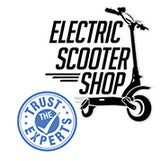Electric Scooters and Bikes are powered by lithium-ion batteries. Although generally considered to be stable and safe, there have been some well-publicised exceptions, and the results can be both spectacular and catastrophic.
Use The Correct Charger
It is extremely important to use ONLY the charger supplied with the scooter. This will have been tested and approved for use with the battery your vehicle contains. Many battery fires can be traced back to incorrect or defective chargers.
Do Not Charge Unattended
We have a company policy of NO overnight charging. We advise the same for anyone charging anything at all, from scooters to power tools. Chargers are designed to switch off when the battery is charged. But if this mechanism fails, overcharging could result, however unlikely. Set a timer and unplug when charged.
Charge in a cool and well-ventilated area and on a hard and non-flammable surface.
Chargers will get warm when charging and this is normal. Make sure your charger has the best environment to operate efficiently by not charging in very hot or very cold areas, and make sure your charger has the best opportunity to dissipate heat. Never cover or insulate your charger.
If you notice any smells, emissions, swelling or noises from your battery STOP charging!
If it is safe to do so, move your battery and/or vehicle to a clear and open area where it can do no damage if it experiences a ‘Thermal Runaway’ event (Goes ‘up’). It will also be easier for firefighters to tackle. Be aware that a damaged battery entering its thermal runaway phase can change state and become dangerous very quickly. Do NOT take chances!
It is extremely unlikely you will experience a battery fire event, but it is not impossible. Take precautions, and if you are one of the unlucky ones, the effects will be minimised.
